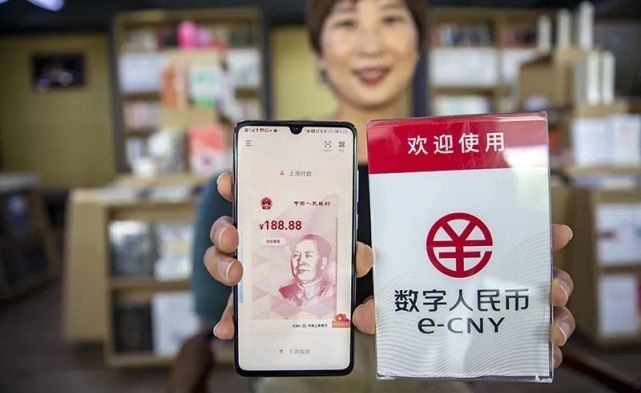Digital Yuan has opened 1.23 billion personal wallets, Digital Yuan or Digital RMB the abbreviation is tentatively “e-CNY” in accordance with international usage practices.
DigitalYuan legal tender issued by the People’s Bank of China, operated by a designated operating agency and redeemed to the public. Based on a broad account system, it supports the loose coupling function of bank accounts and is equivalent to banknotes and coins. It has It has valuable characteristics and legal compensation, and supports controllable anonymity.
The concept of Digital Yuan has two key points. One is that Digital Yuan is the legal tender in digital form; the other point is equivalent to banknotes and coins. Digital Yuan is mainly positioned in M0, that is, cash and coins in circulation.
Mainly positioned as cash payment vouchers (M0), it will coexist with the physical RMB for a long time. It is mainly used to meet the public’s demand for digital cash and help inclusive finance.
At present, the R&D test has basically completed the top-level design, functional R&D, system debugging and other work. It is following the principles of steadyness, safety, controllability, innovation and practicality, and selecting some representative areas to carry out pilot testing.
Digital Yuan Double-tier operation system
The Digital Yuan adopts a two-tier operation system. That is, the People’s Bank of China does not directly issue and exchange central bank digital currency to the public, but first converts Digital Yuan to designated operating institutions, such as commercial banks or other commercial institutions, and then converts them for the public.
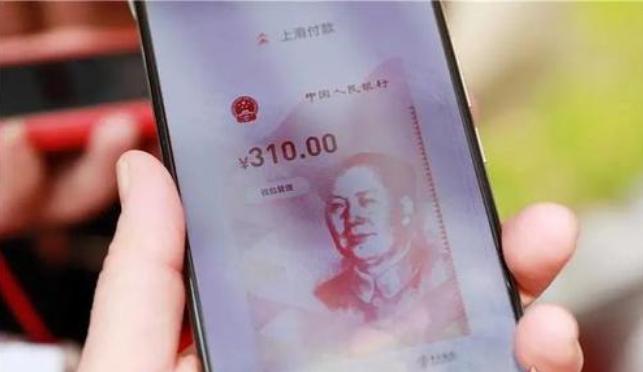
The operating institution needs to pay 100% of the reserve to the People’s Bank of China, which is the 1:1 exchange process. This two-tier operation system is basically the same as banknote issuance, so it will not have a big impact on the existing financial system, nor will it have a big impact on the real economy or financial stability.
DC/EP delivery adopts a two-tier operation mode, which does not constitute competition with the traditional business model of commercial banks. At the same time, it can give full play to the enthusiasm of commercial banks and other institutions in technological innovation: the digital currency delivery system ensures that DC/EP does not exceed issuance, and only sends relative The amount certificate should be issued.
Based on the broad account system
Under the current digital currency system, anything that can form a unique personal identity can become an account. For example, the license plate number can become a sub-wallet of the Digital Yuan, which can be paid by highway or parking.
This is the concept of broad account system.The bank account system is a very strict system. Generally, a lot of documents and personal information need to be submitted to open a bank account.
Other personalized designs
1. Double offline payment. Like banknotes, it can meet the electronic payment needs of places with poor network signals such as planes, cruise ships, underground parking lots, etc.
2. It is more secure. If embezzlement and other behaviors really occur, for real-name wallets, Digital Yuan can provide loss reporting functions
3. Multi-terminal selection. People who are unwilling or unable to use smartphones can choose IC cards, function machines or other hardware
4. Multi-information intensity. According to the intensity of mastering customer information, Digital Yuan wallets are divided into several levels. If you make large payments or transfers, you must pass through real-name wallets with high information intensity
5. Point-to-peer delivery. Through digital currency smart contracts, fixed-point delivery can be achieved. People’s livelihood funds can be distributed to the digital wallets of the masses, so as to eliminate the possibility of false claims and misappropriation
6. High traceability. When the competent authorities issue corresponding legal documents in strict accordance with the procedures, carry out corresponding data verification and cross-comparation to provide information support for combating illegal crimes. Even if the corrupt elements turn it into pieces and other means, it is difficult to escape supervision.
Objectives and vision
China’s research and development of the Digital Yuan system aims to create a new Digital Yuan in the form to meet the cash needs of the public under the conditions of the digital economy, with support for reliable, stable, fast and efficient, continuous innovation and open competition financial infrastructure in the retail payment field, support China’s digital economy development, and improve the generalization. Benefit the level of financial development and improve the operation efficiency of the currency and payment system.
First, enrich the cash form provided by the central bank to the public, meet the public’s demand for digital cash, and help inclusive finance. With the development of digital technology and electronic payments, the use of cash in retail payments is decreasing day by day, but central banks, as the public sector, have the obligation to maintain direct public access to legal tender and ensure the unity of billing under digital economy conditions through the digitization of cash.
The Digital Yuan system will further lower the public’s access to financial services and maintain the legal money supply to a wide range of groups and scenarios. The public without bank accounts can enjoy basic financial services through Digital Yuan wallets. Foreign residents who come to China for a short time can open Digital Yuan wallets without opening bank accounts in mainland China to meet their daily payment needs in China. The “payment-as-settlement” feature of Digital Yuan is also conducive to enterprises and relevant parties to improve the liquidity efficiency while enjoying payment convenience.
Second, support fairness, efficiency and security in the field of retail payment. Digital Yuan will provide a new general payment method for the public, which can improve the diversity of payment tools and help improve the efficiency and security of the payment system.
China has always supported the coordinated development of various payment methods. Digital Yuan and general electronic payment tools are in different dimensions, which are complementary and different. Based on the M0 positioning, the Digital Yuan is mainly used for retail payment. With the purpose of improving the level of financial inclusion, it draws on electronic payment technology and experience and forms a beneficial supplement to it.
Although the payment function is similar, there are also some differences between Digital Yuan and electronic payment tools. First, Digital Yuan is the national legal tender and the asset with the highest security level. Second, Digital Yuan has value characteristics, can transfer value without relying on bank accounts, and supports offline transactions. It has the characteristics of “payment is settlement”. Third, Digital Yuan supports controllable anonymity, which is conducive to protecting personal privacy and user information security.
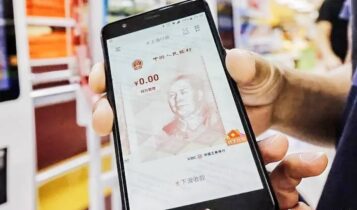
Third, actively respond to the initiatives of the international community and explore ways to improve cross-border payments. All walks of life pay more attention to the cross-border use of the Digital Yuan and promote the internationalization of the RMB.
Cross-border payments involve many complex issues such as currency sovereignty, foreign exchange management policies, exchange system arrangements and regulatory compliance requirements, which are also difficult problems that the international community is committed to promoting and solving.
Currency internationalization is a natural market selection process. The status of international currency is fundamentally determined by economic fundamentals, the depth, efficiency, openness and other factors of the monetary and financial market.
Digital Yuan has the technical conditions for cross-border use, but it is currently mainly used to meet the needs of domestic retail payments. In the future, the People’s Bank of China will actively respond to the initiatives of international organizations such as the Group of Twenty (G20) to improve cross-border payments and study the applicability of central bank digital currency in the cross-border field.
According to the domestic pilot situation and the needs of the international community, the People’s Bank of China will explore cross-border payment pilots under the premise of full respect for the monetary sovereignty of both parties and compliance with the law, and follow the three requirements of “no loss”, “compliance” and “interoperability”.2 Establish legal digital currency exchange arrangements and regulatory cooperation machines with relevant monetary authorities and central banks. System, adhere to the two-layer operation, risk-based management requirements and modular design principles to meet the regulatory and compliance requirements of various countries.
Digital Yuan Value significance
The research and development and application of legal digital currency are conducive to efficiently meeting the public’s demand for legal tender under the conditions of the digital economy, improving the convenience, security and anti-counterfeiting level of retail payments, and promoting the accelerated development of China’s digital economy.
How is Digital Yuan development ?
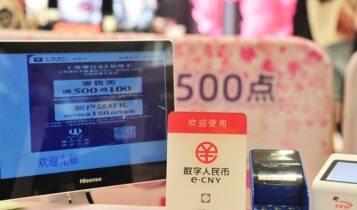
In 2014, the People’s Bank of China set up a special team to start special research on the digital currency issuance framework, key technologies, issuance and circulation environment and related international experience.
At the end of 2017, the People’s Bank of China organized some commercial banks and relevant institutions to jointly carry out the research and development of the Digital Yuan system (DC/EP).
DC/EP has basically completed top-level design, standard setting, functional research and development, joint adjustment testing and other work under the premise of adhering to double-layer operation, cash (M0) replacement, and controllable anonymity.
At the end of 2019, Digital Yuan successively launched pilot tests in Shenzhen, Suzhou, Xiong’an New District, Chengdu and future Winter Olympics scenarios.
At the end of 2019, Digital Yuan pilot tests were launched in Shenzhen, Suzhou, Xiong’an New District, Chengdu and future Winter Olympics scenarios, and 6 pilot test areas were added in Shanghai, Hainan, Changsha, Xi’an, Qingdao and Dalian by October 2020.
On April 19, 2020, the relevant person in charge of the Digital Currency Research Institute of the People’s Bank of China said that the research and development of digital RMB is progressing steadily. First, internal closed pilot tests will be carried out in Shenzhen, Suzhou, “Xiong’an New District”, Chengdu and future Winter Olympics scenarios in China to continuously optimize and improve functions.
In July 2021, the Digital Yuan pilot has been expanded to “10+1”, that is, “10 cities + 1 Winter Olympics scene”.
In December 2020, Yu Weiwen, President of Hong Kong Monetary Authority, published an article entitled “New Trends in Financial Technology – Cross-border Payments”, pointing out that the HKMA is currently studying with the Digital Currency Research Institute of the Central Bank on the technical test of using digital RMB for cross-border payment and making corresponding technical preparations. According to 21 Finance Report, the pilot was tested by Bank of China (Hong Kong) and some bank employees (about 200), as well as merchants.
On December 5, 2020, according to the official WeChat account of the Information Office of the Suzhou Municipal People’s Government, the pilot work of Digital Yuan red envelopes carried out by the Suzhou Municipal People’s Government and the People’s Bank of China officially launched an appointment on the same day.
The number of winning citizens has received 96614 red envelopes, accounting for 96.61% of the total number of winnings, and 536 people participating in the “double offline” payment experience.
The amount of red envelopes consumed is 1896.82 million yuan, accounting for 94.84% of the total amount of red envelopes issued. There are more than 1 million offline merchants supported, and the red envelope amount of online consumption (JD Mall) is 847.82 million yuan, accounting for 44.70%.
On December 29, 2020, Beijing’s first central bank digital currency application scenario landed in Lize, Fengtai. On the morning of the same day, a coffee shop called Manmao Coffee launched a Digital Yuan application scenario test in Jintang Building west of Lize Bridge. Authorized consumers can already pay with digital RMB wallets. I have bought all kinds of goods.
At midnight on February 7, 2021, Beijing launched the “Digital Wangfujing Ice and Snow Shopping Festival” Digital Yuan red envelope reservation activity, which distributes 1000 million yuan Digital Yuan red envelopes to individuals in Beijing, boost domestic demand and encourage “on-site New Year”.
On April 1, 2021, Wang Xin, director of the Research Bureau of the People’s Bank of China, introduced at a press conference held by the State Council Information Office that the digital RMB will be mainly used for domestic retail payments.
Previously, it has been tested in many pilot areas in China. The test scenarios are getting richer and richer, and it is also considered to meet market demand when conditions are ripe. For cross-border payment transactions, this can also be achieved.
On April 10, 2021, Shenzhen launched a Digital Yuan pilot from today to the 23rd of this month, expanding the number of test population by another 50 million. This pilot mainly takes “using Digital Yuan to enjoy consumption discounts” as the core, with a total discount of 1000 million yuan.
On May 8, 2021, the Digital Yuan access to Alipay added three sub-wallets, including Eleme and Hema. The digital RMB APP was updated, and the “EMB Bank (Alipay)” in the wallet operator has been available.
In June 2021, Beijing, Shanghai, Changsha and other places successively launched a new round of digital RMB pilot activities. Among them, Beijing issued 20 million Digital Yuan red envelopes of 200 yuan each, Shanghai issued 35 million Digital Yuan red envelopes with an amount of 55 yuan each, and Changsha issued 30 million digital RMB red envelopes with a total amount of 400 million yuan. The red envelopes are divided into 100 yuan and 200 yuan.
On June 28, 2021, according to a number of local media reports in Sichuan, Chengdu has completed system construction and preliminary testing by using the “Tianfutong App” to pay for Digital Yuan by bus and subway.
On June 29, 2021, Suzhou Rail Transit Line 5 was officially put into operation. All station ticket vending machines support Digital Yuan App code scanning payment. This function is the first time in China to be launched. Baweitong Technology Co., Ltd. has carried out the transformation and upgrading of ticket purchase machines and the stability test of the official App “Suehang” payment interface on other lines. In the future, Suzhou Rail Transit Line 1-5 will open digital RMB payment for ticket purchase.
On August 1, 2021, Beijing Rail Transit added applications that support Digital Yuan offline ticket purchase/card, supplementary ticket replenishment and recharge, as well as online ticket purchase in Yitong APP.
This is an upgraded application after the Yitong APP supports Digital Yuan swipe payment on June 30. It realizes the full coverage of digital RMB in rail transit gates and ticket purchase payment scenarios, and will greatly improve the digital travel experience of passengers.
On November 10, 2021, the General Office of the Hainan Provincial People’s Government issued the Hainan Province’s “Fourth Five-Year Plan” for Building an International Tourism Consumption Center. The plan proposes to speed up the promotion of Digital Yuan pilots and add foreign currency and RMB settlement and exchange service points.
Yi Gang said that in recent years, especially after the outbreak of COVID-19, global electronic payments, especially mobile payments, have developed rapidly.
Last year, China Mobile’s payment amount increased by nearly 25% year-on-year, and the current penetration rate has reached 86%, which not only facilitates the lives of residents, but also strongly supports the fight against the epidemic. However, at present, electronic payment tools are mainly provided by the private sector, and there may be risks such as market segmentation and privacy leakage.
The central bank digital currency (CBDC) enables the central bank to continue to provide credible and safe payment means to the public in the era of the digital economy, and maintain the stability of the payment system while improving payment efficiency.
According to Yi Gang, the People’s Bank of China has been studying legal digital currency since 2014. In 2016, it built the prototype of the digital currency of the first generation of the People’s Bank of China. At the same time, it put forward basic characteristics such as M0 positioning, two-layer operation system, and controllable anonymity. Since 2017, the People’s Bank of China has cooperated with commercial banks, Internet companies, etc. to jointly carry out digital RMB research and development.
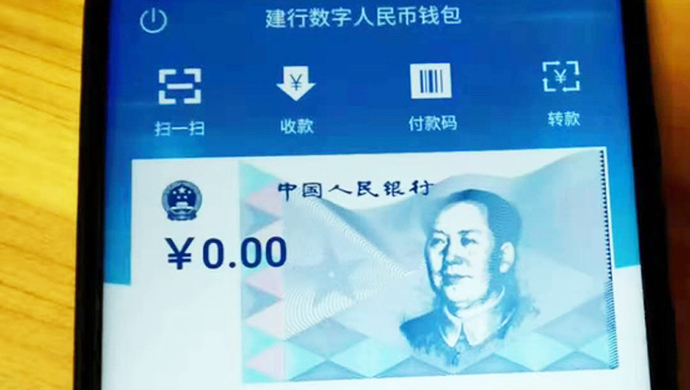
At the end of 2019, the digital RMB began to be piloted, including ten cities and the scene of the 2022 Beijing Winter Olympics. Some cities have also launched digital RMB green travel, low-carbon red envelopes and other usage scenarios. In July this year, the People’s Bank of China released a white paper on digital RMB. As of October 8 this year, there have been more than 350,000 digital RMB pilot scenarios, with a total of 1.23 billion personal wallets opened and a transaction amount of about 560 billion yuan.
Yi Gang said that the next step will be to improve the design and use of digital RMB in a targeted way according to the pilot situation. First, refer to the management ideas of cash and bank accounts to establish a management model suitable for digital RMB; second, continue to improve settlement efficiency, privacy protection, anti-counterfeiting and other functions; third, promote the interaction between digital RMB and existing electronic payment tools to achieve the unity of security and convenience; fourth, improve the digital RMB ecological system. Build and improve the inclusiveness and availability of digital RMB.
Regarding the next step, Yi Gang said, We have always stressed that the use and promotion of the central bank’s digital currency should follow the principle of marketization. That is to say, we will issue as much as ordinary people need to exchange.
China’s vast territory, large population and large regional development differences, as well as residents’ payment habits, determine that cash will continue to exist for a long time in the foreseeable future. As long as there is a demand for cash, the People’s Bank of China will not stop the cash supply or replace it with an executive order.
We have jointly launched the mCBDC bridge project with the Bank for International Settlements, the Central Bank of Thailand, the Central Bank of the United Arab Emirates and the Hong Kong Monetary Authority to jointly study the role and technical feasibility of central bank digital currency in cross-border payments. We have also carried out technical exchanges with the European Central Bank on the design of CBDC.
In the future, we will continue to discuss the standards and principles of the CBDC with central banks and international organizations in an open and inclusive manner, and properly respond to various risks and challenges in the process of promoting the development of the international monetary system. Yi Gang said.

